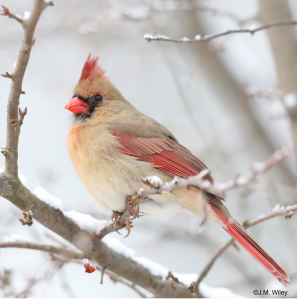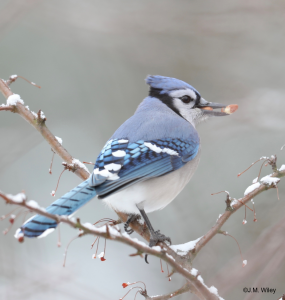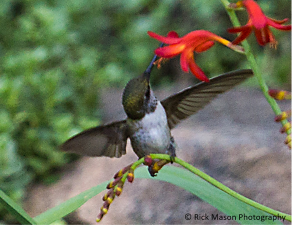 “Mr. Speaker, I would like to recognize February, one of the most difficult months in the United States for wild birds, as National Bird-Feeding Month. During this month, individuals are encouraged to provide food, water, and shelter to help wild birds survive. This assistance benefits the environment by supplementing wild bird’s natural diet of weed seeds and insects. Currently, one third of the U.S. adult population feeds wild birds in their backyards.”
“Mr. Speaker, I would like to recognize February, one of the most difficult months in the United States for wild birds, as National Bird-Feeding Month. During this month, individuals are encouraged to provide food, water, and shelter to help wild birds survive. This assistance benefits the environment by supplementing wild bird’s natural diet of weed seeds and insects. Currently, one third of the U.S. adult population feeds wild birds in their backyards.”
~Senator John Porter of Illinois in 1994
Bird feeders are very popular and a great way to work on your bird identification skills (while the birds are stationary and eating).
While over 20 types of seeds are sold as birdseed you can’t go wrong with the small black-oil sunflower seed. This seed is a favorite of many smaller birds, such as chickadees, nuthatches, and titmice. The seed has a high oil content. This nutritionally important for birds. The seed coat makes it easy for them to crack open.
Some birds, like woodpeckers, chickadees, and nuthatches like suet. Suet is animal fat. Some grocery stores sell it in the meat department, but you can also find suet cakes at hardware stores or feed stores. For suet cakes, the animal fat is melted down and often mixed with bits of fruit or seeds, then molded into a square.
 Peanuts are another bird favorite. Blue jay, downy woodpecker, red-bellied woodpecker, tufted tit-mouse, black-capped chickadee, cardinal, among others are the birds you can expect to see eating peanuts or peanut pieces at your feeder. Something to keep in mind, however, is squirrels also like peanuts. And while we like squirrels, we understand they can create problems.
Peanuts are another bird favorite. Blue jay, downy woodpecker, red-bellied woodpecker, tufted tit-mouse, black-capped chickadee, cardinal, among others are the birds you can expect to see eating peanuts or peanut pieces at your feeder. Something to keep in mind, however, is squirrels also like peanuts. And while we like squirrels, we understand they can create problems.
Cracked corn in your feeder will attract mourning dove, cardinal, American goldfinch, red-bellied woodpecker, pileated woodpecker, downy wood-pecker, hairy woodpecker, white-breasted nuthatch, and others. Again, the squirrel caution comes in, but you should also keep an eye out for signs of deer raiding your corn.
It’s too early for humming birds to be in your yard, but it’s not too early to be thinking about how you can attract them this summer. Plants that hummingbirds are attracted to include: bee balm, cardinal flower. trumpet vine, native columbine, and jewelweed. Starting thinking about how you can include some of these in your summer gardening plans.
 You can also use a hummingbird feeder. The feeder is filled with a syrup of one part granulated sugar to four parts water. You’ll need to heat water then add sugar, stirring until it dissolved. Let the mixture cool before filling your feeder.
You can also use a hummingbird feeder. The feeder is filled with a syrup of one part granulated sugar to four parts water. You’ll need to heat water then add sugar, stirring until it dissolved. Let the mixture cool before filling your feeder.
Clean your feeder at least once a week. There have been fungus outbreaks at feeders that have caused infections in birds.
Hang your feeder in an area that is somewhat shaded. You could suspend it with string from a tree branch or use a homemade post. A nifty tip is to smear petroleum jelly on the string to keep ants out of the feeder.
Enjoy feeding the birds!!

